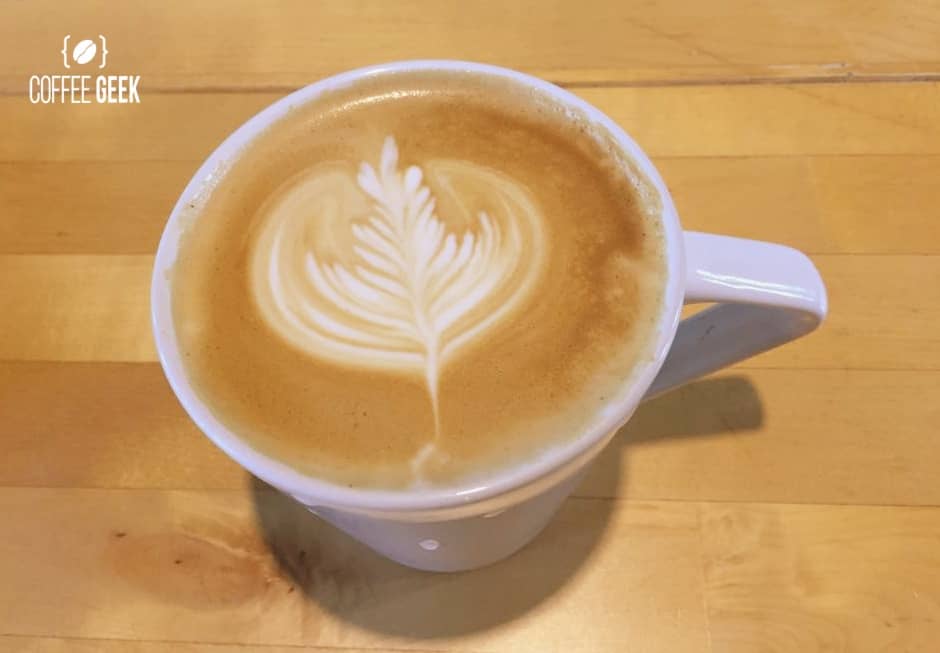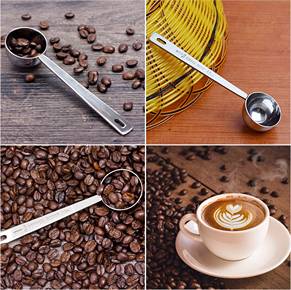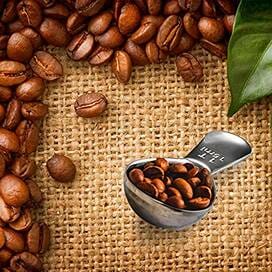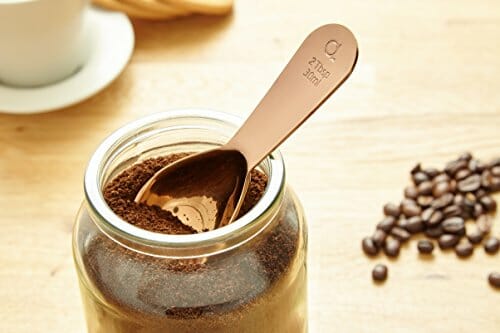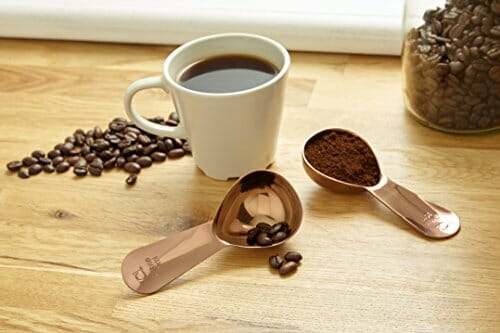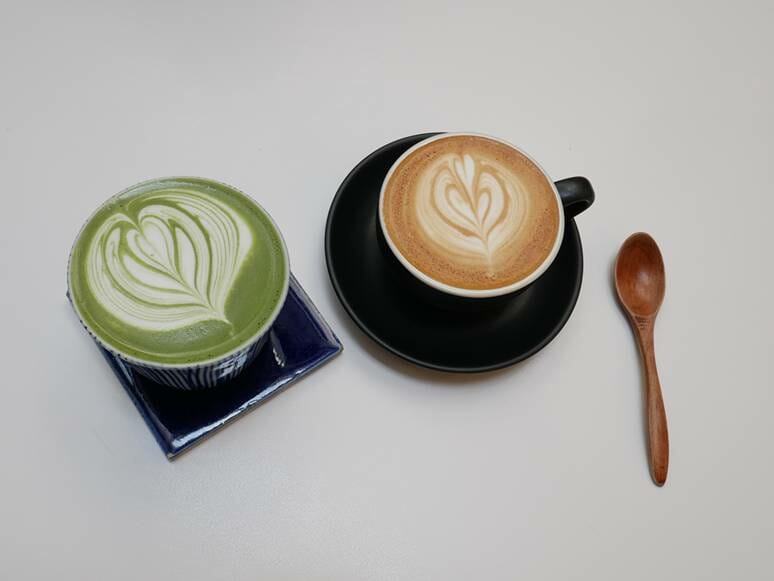If you want to make a delicious cup of coffee at home, all you need to do is follow some basic principles to determine the golden ratio.
One of these principles is to know what amount of coffee is for a cup as well as the coffee to water ratio. When you’ve got this step right then, you can make the perfect cup of coffee each time.
Now, if you’re wondering how much coffee per cup or more cups should be used? Then don’t worry; in this article, you’ll learn how much coffee per cup needs to be used and also the coffee to water ratio.
What difference does it make? Firstly, you want to get the most refined flavor you can from the beans you select.
They could have floral, caramel, nutty, or chocolate tones, but using the incorrect amount of coffee in a cup can end up ruining everything.
The second reason is that many take their coffee in cream or milk; therefore, you’ll need enough flavor to pierce through the milk.
Thirdly, you’ve decided to brew your coffee in a particular way, and knowing how to get the best out of your brew is crucial.
What is meant by a cup of coffee?
The discussion on the amount of coffee in a cup must define what a “cup” exactly means? Unfortunately, “cup” is a subjective term and not an exact measurement; therefore, we require a more precise standard.
Let’s begin with this. Do not imagine one cup like you might think of it in baking.
As per US standard, one cup equals 236 milliliters, in other words, 8 ounces of water.
However, all of this doesn’t connect with a real cup or mug, as they are made in different sizes.
The most popular measurement for the term “cup” of coffee is 5 fluid ounces or 150 milliliters.
Your cup of coffee at the beginning of the day could be smaller or larger than this; however, 5 fluid fluid-ounces water volume is how we’ll calculate it. That means eight cups of coffee is equivalent to 40 fluid ounces.
How do you measure coffee?
Measuring coffee is not as complex as it may seem. You can be extremely specific in your approach, give the issue some thought and avoid going too far.
The idea behind the word “scoop” is meaningless. What is the size, and how big is an actual scoop?
What happens if the ground coffee is small and fine? What happens if the ground is coarse?
When making coffee, it is crucial to be consistent with the quantity of coffee you use. It is possible to have an individual taste. However, there are a few essential factors to take into consideration.
The standard coffee to water ratio is 1:18, meaning 1 gram coffee grinds for every 18 millimeters of water.
The most efficient method of achieving this is by using a scale. However, that’s quite a lot of work when you require a quick fix at the beginning of the day.
Remember that everything needs to be measured based on ground coffee beans and not the beans before the grinding.
When we measure the coffee ground, we eliminate the issue of fineness or coarseness of ground coffee beans.
You can measure coffee in tablespoons, grams, or even scoops so the quantities can be identified, and a scale is the most efficient method of figuring out the precise weight of the coffee grounds.
You will always receive the exact amount of coffee in each cup, even if you try various coffee beans, as long as you know the coffee to water ratio.
Every type of bean differs from one another; however, when you ensure that the ratio stays the same, you won’t have trouble.
Measurements of Coffee
From the beginning, it should be noted that measuring coffee in tablespoons is similar to measuring water by gulp.
Tablespoons are a particular measurement that is effective in most situations; however, coffee is different. Coffee’s quantity in one tablespoon will be variable.
The method used to extract the pulp of cherry from the beans affects the amount of moisture left inside the beans.
The degree of coarseness in the beans will also affect the quantity of coffee in one tablespoon. The whole concept is accuracy and consistency.
Scoops or tablespoons can be used if you don’t have a scale; however, we must be aware of what we mean by a tablespoon in relation to coffee.
One tablespoon of coffee has a weight of around 10.6 grams.
Basically, for a coffee cup, you’ll need to make use of approximately 1 ½ -2 tablespoons of coffee grinds.
If you’re using scoops, make sure that the scoop is equivalent to 2 teaspoons.
Earlier, we defined “cup” as 5 ounces. If you use precise measurements, that’s the case. But, If you are using tablespoons or scoops, a cup of coffee is 8 ounces per cup.
To achieve this, you’ll need to make use of approximately 1 ½ -2 tablespoons of coffee. Each tablespoon contains 5.3 grams of ground coffee, and you can determine the appropriate ratio from there.
Here is an easy guideline for you when using tablespoons:
Measurement for 8-ounce cups:
1 cup = 8 oz water + 2 tablespoons coffee
2 cups = 16 oz water + 4 tbsp coffee
3 cups = 24 oz water + 6 tbsp coffee
4 cups = 32 oz water + 8 tbsp coffee
5 cups = 40 oz water + 10 tbsp coffee
Measurement for 10 ounce cups:
1 cup = 10 oz water + 2 1/2 tbsp coffee
2 cups = 20 oz water + 5 tbsp coffee
3 cups = 30 oz water + 7 1/2 tbsp coffee
4 cups = 40 oz water + 10 tbsp coffee
5 cups = 50 oz water + 12 1/2 tbsp coffee
Measurement for 12 ounce cups:
1 cup = 12 oz water + 3 tbsp coffee
2 cups = 24 oz water + 6 tbsp coffee
3 cups = 36 oz water + 9 tbsp coffee
4 cups = 48 oz water + 12 tbsp coffee
Whereas, when scoops are in question, as mentioned above that one scoop equals 2 tablespoons. So, for every 8 oz cup, you want to use one scoop.
Here’s a guideline for using coffee scoops:
4 cups: 20 oz water + 2 1/2 scoops
6 cups: 30 oz water + 3 1/2 scoops
8 cups: 40 oz water + 5 scoops
12 cups: 60 oz water + 7 1/2 scoops
Coffee To Water Ratios
Let’s become more sophisticated and think about the exact measurements of the coffee ratios. You’ll require a scale, and don’t worry; they’re inexpensive if you don’t already have one.
The idea behind “coffee ratio” is relatively easy to understand. It’s the proportion that you get from ground coffee and water. It is the formula that you use to achieve the perfect viscosity, strength, and flavor.
As previously mentioned, the typical ratio of coffee is 1:18, or one gram of coffee for 18 milliliters of water.
However, you might want to utilize a different ratio based on the taste you like and the beans you’re using. The ratio is what determines the flavor.
These are the general guidelines:
| Coffee Ratio | Coffee (Grams) | Water (Milliliters) | Taste |
| 1:15 | 1 | 15 | Concentrated and Bright |
| 1:16 | 1 | 16 | Smooth and Bright |
| 1:17 | 1 | 17 | Smooth and Rounded |
| 1:18 | 1 | 18 | Lighter and Rounded |
Note that these instructions are for brewing coffee with hot water. However, the method employed for extraction can affect the ratio.
The number of tablespoons of coffee, how much coffee, how many milliliters or ounces of water you use for your coffee is up to you at the end.
According to the Specialty Coffee Association of America (SCAA), the coffee to water ratio is between 1:15 to 1:18 (coffee: water), meaning 150ml divided by 18 equals 8.3g in coffee for each cup.
So as per American standard; 8.3g is used for 150ml, 10g for 180ml, 55g for 1000 ml.
The ratios we’ve measured will vary based on the method of brewing. It is essential to consider this and adjust the ratio to suit.
Understanding why ratios are different is crucial to making your perfect drink as it is directly concerned with the type of extraction employed, water temperature, and the extraction duration.
Let’s take a look at how and why different brewing methods make a difference.
Drip Coffee
Drip coffee, often called pour-over coffee, involves pouring coffee grounds into a paper filter, and then water flows through to an insulated carafe under it.
Seems simple right? Take your time. The amount of coffee required differs based on the filters themselves. When you remove the filter, it will be heavier than the quantity of coffee you had used.
What quantity of water do you think the filters can hold back? In general, the filter will hold back twice the amount of coffee consumed.
It’s because a 1:15 ratio is a 1:13 ratio, actually, since 2 grams of water won’t pass through the amount of coffee brewed. Most people believe that pour-over or drip coffee should be made in a 1:20 to 1:177 ratios.
French Press
When making a brew using a French Press, the vessel is filled with hot water and allowed to sit for 4 to 5 minutes.
Once the extraction is completed, the metal filtered plunger moves all grounds down towards the bottom.
Brewing with the French Press is entirely different; in this case, the extraction occurs in the water itself. That means there’s no loss of water in brewing using the French Press.
Making use of the French Press for coffee gives you more control over coffee’s flavor and viscosity. It’s simple to alter the ratio of coffee based on the beans you’re making use of at the time.
The longer you allow your grounds in the steeping process, the better the coffee. As a result, coffee can be prepared to suit your tastes and also the preference of guests.
Espresso
You might have heard some people say that espresso is too strong. Well, what it indicates is that espresso may be having a different coffee ratio. It’s true.
The difference is that baristas don’t care about the quantity of water extracted but rather the exact weight of the liquid extracted.
In other brewing methods, the ratios depend on the quantity of water required to complete the extraction.
For instance, when you use a French Press, the amount of coffee grounds used directly correlates to the water you pour into the container.
However, espresso brewing does not give you control over the quantity of water used; therefore, it’s all about yield. Hence, for 18 grams of coffee, the yield is 36 grams or a 1:2 ratio.
Baristas can experiment with the amount of coffee used and the yield’s weight to obtain the most flavor from the beans.
Additionally, grounds get tamped to regulate the density. Espresso is the most variable of all other methods, and more variables mean more flexibility.
Cold Brew
Let’s state the obvious that cold brewing affects the coffee ratio. This is because the coffee grounds do not meet hot water; instead, Cold-brew extraction occurs at room temperature.
It is also possible to do this in the fridge; however, it’ll take longer since oil is extracted out of coffee grounds at a slower speed.
Typically, the duration of extraction for cold brew is between 22 to 24 hours.
The long period of cold brew extraction produces concentrated liquid.
When you serve cold brew, the melting ice and since it is diluted with water, they both does the job well.
For Cold brews, a long duration is used for extracting it at room temperature; therefore, a higher coffee ratio is essential.
The standard coffee ratio that is used for cold brewing ranges between 1:10 to 1:13. That is, you’ll use more coffee per every cup of water.
Overview: Key Points To Remember
A standard cup measures 5 fluid ounces
1:18 (1 gram of coffee for 18 milliliters in water) is the ideal coffee ration
To measure accurately, you need the use of a scale
2 tablespoons of ground coffee weight approximately 10.6 grams
Use 2 tablespoons of coffee ground for an 8-ounce cup
If using a scoop, ensure that it’s equivalent to 2 tablespoons of coffee
For Cold brew, 1:10 to 1:15is the ideal ratio
In the end, it all depends on personal taste, so experiment to discover the golden ratio for you.
The equipment you use to brew your coffee will also affect how much coffee you can use. The majority of coffee makers have instruction guides with them.
Single-cup coffee machines usually serve five-ounce cups of coffee in a standard-setting. The longer time spent on brewing, the lesser coffee you’ll need to use for each cup.
We all wait for the initial cup of tea to start the day, and you don’t want to spend your time playing with a scale for coffee and variations in the amount of water.
Finding out how much coffee you’d like to make the perfect cup should not be a matter of deciding before you cook breakfast or hurry your kids to school.
However, determining the correct ratio that suits your taste and quality depends on how you experiment, whether you use scoops, tablespoons, or scale to measure the coffee.
FAQS
How much coffee do I use per cup?
The amount of coffee per cup means the measurement of coffee in grams. So you can use 14 grams of ground coffee in 8 ounces of water. For a milder cup, you can use 12 grams of coffee.
How much coffee do I use for 4 cups?
For 4 cups, you should use 60 grams of ground coffee, whereas, for a milder cup, use 48 grams of coffee.
How many tablespoons of coffee do you use per cup?
The number of tablespoons of coffee per cup or the golden ratio is 2 tablespoons in 8 ounces of water and 1 ½ tablespoon for a milder cup.
How many tablespoons of coffee do you use for 4 cups?
You can use 8 tablespoons of coffee in 32 ounces of water for 4 cups of coffee. For a milder cup, use 6 ½ tablespoons of ground coffee.
What are coffee ratios for drip coffee makers in tablespoons?
Here is the basic guideline for drip coffee per cup in tablespoons:
4 cups: 20 oz water + 5 tbsp coffee
6 cups: 30 oz water + 7 1/2 tbsp coffee
8 cups: 40 oz water + 10 tbsp coffee
10 cups: 50 oz water + 12 1/2 tbsp coffee
12 cups: 60 oz water + 15 tbsp coffee
How much caffeine per cup of coffee contains?
According to the USDA, a standard cup of brewed coffee contains 11.8 mg caffeine per fluid ounce of brewed coffee, on average.
| Fluid Ounces(brewed coffee) | Total Caffeine (mg) | 5-oz “Cups” |
| 1 | 11.8 | 1/5 |
| 2 | 23.6 | 2/5 |
| 3 | 35.4 | 3/5 |
| 4 | 47.2 | 4/5 |
| 5 | 59 | 1 |
| 8 | 94.4 | 1.6 |
| 10 | 118 | 2 |
| 12 | 141.6 | 2.2 |
| 16 | 188.8 | 3.2 |
| 20 | 236 | 4 |
Note that many coffee machine makers identify the “cups” as 5-oz cups. For example, a 12 cup coffee machine can produce 60 fluid ounces of coffee.
Then multiply 60 fluid ounces of coffee by 11.8 mg to obtain 708 mg of caffeine for each cup of coffee for the specific machine.
To Wrap Up How Much Coffee Per Cup
These are the basic ratios and measurements you can apply to nearly every type of coffee. The key is to select what is the most effective for you.
Feel free to play around with adding some milligrams more or less to determine which one suits your taste most.


